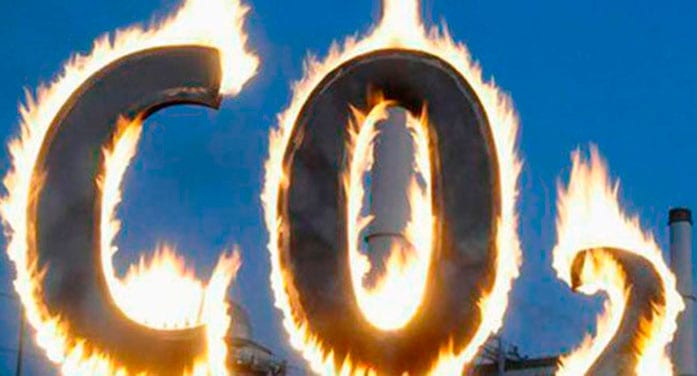A scientist at the University of Alberta is lending her expertise on mineral carbonation to policy-makers in the United States in hopes of reducing atmospheric carbon dioxide on a mass scale.
Sasha Wilson, an associate professor in the Faculty of Science, worked with the American non-profit Energy Futures Initiative (EFI). In December 2020, Wilson and her colleagues co-led a panel for U.S. congressional staff on mineral carbonation and its potential for implementation in the United States. Their report is titled Rock Solid: Harnessing Mineralization for Large-Scale Carbon Management.
“There is increasing awareness that carbon neutrality will not be enough to mitigate the worst impacts of anthropogenic climate change – we need to go net negative by implementing carbon dioxide removal,” explained Wilson, associate professor in the U of A’s Department of Earth and Atmospheric Sciences and Canada Research Chair in Biogeochemistry of Sustainable Mineral Resources.
Mineral carbonation is the process of permanently capturing carbon dioxide in solids rich in magnesium and calcium. While this process occurs naturally in rocks, scientists have developed a method of mineral carbonation that uses waste materials, such as mine tailings, to capture atmospheric carbon dioxide.
“The best ways to achieve this immense feat at scale are to use carbon dioxide removal technologies that have co-benefits,” said Wilson. “We have an opportunity to use two waste streams – carbon dioxide and mineral wastes – together to make useful products to grow the circular economy and clean tech jobs.”
“Addressing global warming is the biggest challenge facing society, so it is no exaggeration to state that Sasha Wilson’s research, which involves exploring new, economically viable ways of drawing down carbon dioxide is vital to global health, safety and economic viability,” said Stephen Johnston, professor and chair in the Department of Earth and Atmospheric Sciences. “It is no wonder that the United States has reached out to Sasha to ask for her assistance in their efforts to address climate change.”
What makes mineral carbonation particularly powerful is its potential to operate on a massive scale, removing gigatonnes of carbon dioxide from the atmosphere each year.
There are two types of mineral carbonation technology. The first occurs above ground, using finely crushed minerals to capture atmospheric carbon dioxide. The second involves the injection of carbon dioxide gathered from the atmospheric or industrial waste into minerals beneath Earth’s surface.
“The goal of this effort was to provide policy-makers with guidance on how these technologies could be scaled up in the United States,” said Wilson. “We were asked to provide recommendations for priority research areas to accelerate industrial implementation, touching on science, engineering, policy and regulatory needs.”
While this work was focused on implementation in the United States, many of the recommendations outlined in the report are also relevant to Canada.
| By Katie Willis for Troy Media
This article was submitted by the University of Alberta’s Folio online magazine. Folio is a Troy Media![]() Editorial Content Provider Partner.
Editorial Content Provider Partner.
COMMUNITY NEWS OUTLET ACTION PLAN!
WEBSITE HOSTING AND ALL TROY MEDIA EDITORIAL CONTENT POSTED TO YOUR SITE DAILY FOR ONLY $129.95 PER MONTH.
Limited time offer: Get your first 2 months FREE! Click here for details



